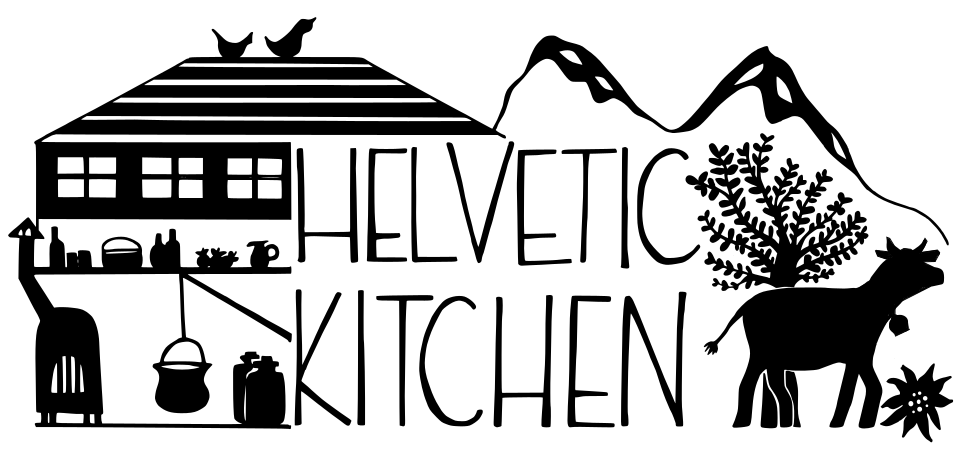Swiss Cheese
Here are some of Switzerland's most beloved cheeses.
Often at least one half of a cheese fondue, Gruyère is a particularly delicious and versatile cheese. It is excellent when cooking or baking because it melts easily and imparts a great deal of flavour without being overwhelming.
It is named after the town of Gruyères in the canton of Fribourg, where the cheese originated. Now it is protected, not only in the canton of Fribourg, but also in Neuchatel, Bern, Jura, and Vaud with a designation of origin or AOP, which means only cheeses produced in this region using the traditional methods can be called Gruyère.
When the cheese is young (up to five months) it tastes mild, slightly sweet, and nutty, but the flavour deepens with age, and year old cheeses often have a rich saltiness and almost gritty texture.
Emmentaler cheese is the prototypical, hole-y, Swiss cheese. Reseachers only recently posited that the holes were perhaps caused by particles of hay present during production.
The cheese originated in the beautiful Emme valley, and is protected under the name Emmentaler Switzerland, but there are plenty of other varieties going by the name Emmental that come from France and Germany.
The Swiss production specifications require the cheese to be made from Emmental milk (from happy, well-fed cows in the Emme valley), and matured in a cellar for 120 days. No additives are allowed. The cheese itself is quite mild, but the longer it ages the stronger and more aromatic its flavour becomes.
Tilsiter is named for a city in East Prussia, Tilsit (which today belongs to Russia and is called Sovetsk), where Swiss immigrants began to make a semi-hard cheese in the style of the alp cheeses from home. It wasn't until 1893 that one of the Swiss-Prussian cheesemakers (and blessed are those cheesemakers) returned to Switzerland, recipe in pocket, and began to produce the cheese in a little town in the canton of Thurgau. There are harder varieties, excellent for melting, and also a popular milder, creamy variety.
Not to be confused with the Vacherin Mont d'Or, its super soft and creamy brother, the Vacherin Fribourgeois is a firm cheese, often paired with Gruyère in a cheese fondue. It originated in the same canton but, depending on the age of the cheese, the Vacherin has a more buttery texture and subtler taste. This is my favourite Swiss cheese, especially when it's well-aged.
Appenzeller cheese was first mentioned in 1282 and there is even a document on the Appenzeller website to prove it. Today, it is still produced in the Appenzell region by about 75 dairies. It remains a popular hard cheese which can be used for fondue and raclette, as well as a myriad of other dishes.
It is surely the best advertised Swiss cheese, with print ads and commercials showing farmers dressed in the traditional Appenzeller costume, often 'guarding' the cheese's secret recipe (a mix of herbs used in brining) that, according the website, only two people in the world know.
For more on Swiss cheeses, see here: http://www.cheesesfromswitzerland.com/












